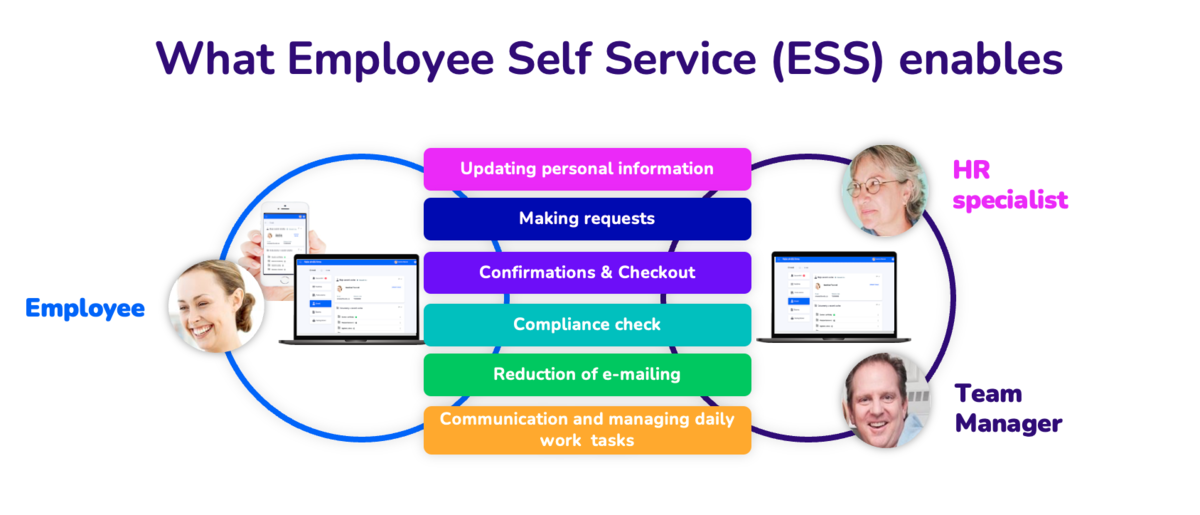Employee self-service (ESS) enables employees to ease many job-related tasks such as updating personal information, receiving company information, communicating with manager, accessing company benefits information, downloading pay slips, requesting time off or make any other request or message. ESS simplifies many processes which was once largely paper-based and can be digitalized and maintained by employees instead of administrative staff.
For employees ESS is a native part of a company's intranet which
- streamline transactions and communication between employees, managers and administrators
- minimizing the need for HR intervention
- enabling remote communication and information updates
- automating manual, repetitive routine documented work
- serves as employee help desk
What Are Key Features of Employee Self-Service Software?
The features of employee self-service software include the following:
- online access to personal info and documents
- updating personal information and other changes within personnel file such as major life events
- logging work time and hours
- choose benefit programs
- choose training courses
- applying and making requests such as leave and holiday application
- confirmation of issued work equipment and tools
Benefits of self-service for employees
- employee self-service systems save time for communication
- streamline employee request processing
- giving employees more autonomy to manage their information
- help make employees feel more connected to their organization and more productive
- reduce employee dependency on the HR department
- make short work of repetitive employment tasks
- access payslips
- submit applications, requests, HR or IT forms in a few clicks
- view holiday calendar, apply for leave, check attendance information
- view company policies, and documents
- streamline communication with peers and managers
Benefits of self-service for company HR and managers
- reducing sending and replying e-mails by 90%
- employee self-service systems save time for HR administrators
- zero effort collection of onboarding documents
- easy updating of employee information without HR intervention or sending e-mails
- reduces repetitive HR tasks, documentation, manual work
- free up valuable HR resources for strategic business-critical work
- streamline workflows between employees and managers
- standardized processes and uniform policy enforcement
- easy digital access to all necessary people, processes, information and documents
- getting routine HR work done
